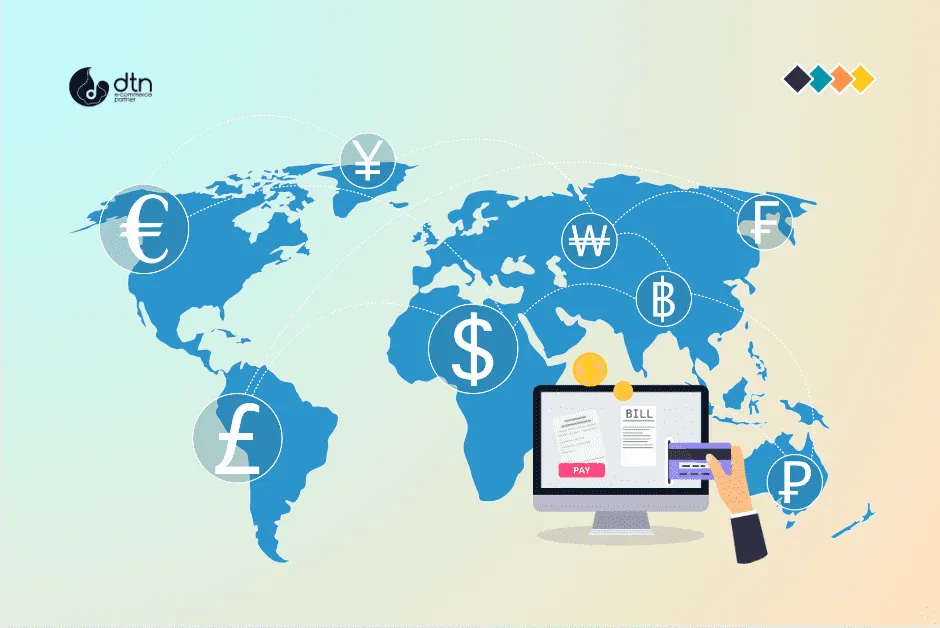Transcending geographical boundaries has become a norm. Businesses are tapping into global markets, reaching customers across continents. However, this global reach comes with its own set of challenges, one of which is handling International Transactions and Currency Conversion in E-commerce.
Table of Contents
The Currency Conversion Conundrum
When a customer from one country makes a purchase from an online store based in another country, currency conversion comes into play. This process of exchanging one currency for another can be tricky, especially when dealing with fluctuating exchange rates.

The Impact of Exchange Rates
Exchange rates, which determine the value of one currency relative to another, are constantly in flux. This volatility can have a significant impact on e-commerce transactions. For instance, if the exchange rate between the customer’s currency and the store’s currency changes after the purchase is made, the customer may end up paying more or less than they initially expected.

Mitigating Currency Conversion Risks
To mitigate the risks associated with currency conversion, e-commerce businesses can employ various strategies:
- Transparent Currency Display: Clearly display the prices of products in multiple currencies on your website. This allows customers to compare prices in their own currency and make informed decisions.
- Live Exchange Rate Updates: Implement a real-time currency converter on your website. This enables customers to see the latest exchange rates and understand the exact amount they will be charged in their own currency.
- Fixed Exchange Rates: Offer customers the option to lock in an exchange rate at the time of purchase. This eliminates the risk of exchange rate fluctuations and provides customers with peace of mind.
- Multi-Currency Payment Processing: Partner with a payment processor that supports multiple currencies. This allows customers to pay in their own currency, eliminating the need for currency conversion on their end.

Addressing International Payment Methods
In addition to currency conversion, e-commerce businesses need to cater to a diverse range of international payment methods. Customers may prefer to use their local payment gateways, credit cards, or digital wallets. By offering a variety of payment options, businesses can ensure a smooth and convenient checkout experience for customers worldwide.

Navigating Cultural and Language Barriers
When conducting business internationally, it’s essential to be mindful of cultural and language barriers. Translating your website into multiple languages and adapting your marketing and customer service strategies to suit different cultures can go a long way in building trust and rapport with global customers.

Conclusion
Handling international transactions and currency conversion in e-commerce requires careful planning and attention to detail. By implementing effective strategies to mitigate currency conversion risks, offering a variety of payment methods, and addressing cultural and language barriers, businesses can unlock the full potential of global markets and provide a seamless shopping experience for customers around the world.
Frequently Asked Questions
We’ve compiled a list of answers to common questions.
Why is currency conversion a significant challenge in international e-commerce transactions?
Currency conversion poses a challenge in international e-commerce due to fluctuating exchange rates. When customers from one country make purchases in another country’s currency, the changing exchange rates can impact the final amount paid, leading to potential discrepancies in the customer’s expectations.
How can e-commerce businesses mitigate the risks associated with currency conversion?
E-commerce businesses can employ several strategies to mitigate currency conversion risks. These include transparent currency display, live exchange rate updates, offering fixed exchange rates at the time of purchase, and partnering with payment processors that support multi-currency transactions.
Why is offering a variety of international payment methods important for e-commerce businesses?
Providing diverse international payment methods is crucial for accommodating the preferences of customers worldwide. Different regions may have varying preferences for payment gateways, credit cards, or digital wallets. Offering a range of payment options ensures a smooth and convenient checkout experience for a global customer base.
How can businesses address cultural and language barriers in international e-commerce?
To address cultural and language barriers, businesses can translate their websites into multiple languages. Additionally, adapting marketing and customer service strategies to suit different cultures helps in building trust and establishing a positive rapport with a global audience, fostering a more inclusive and personalized customer experience.



